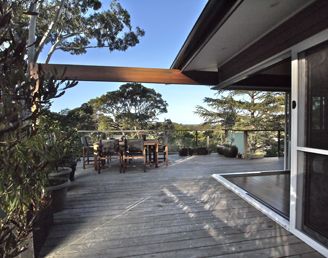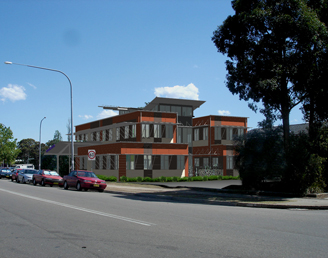House bigness ≠ house goodness
Posted by admin on 22/08/2011 at 5:22 amAustralians still have the biggest houses in the world, and NSW has the biggest houses in Australia. That trend may have peaked and is starting to turn downward again, but size is still the biggest hurdle in housing affordability. Industry pundits who claim it’s all about land shortage, or sustainability requirements, or (heaven forbid) the carbon tax, are wrong. And we IN the industry have known this all along.
When the average punter struggles to get their budget around the house they want, more often than not it is because their eyes are bigger than their wallet. Especially in Sydney. Envirotecture has worked as a specialist consultant to several of the country’s biggest project builders, and they all have the same message (even if they struggle to respond to it properly): people in Sydney want the biggest boofiest house they can afford, people in Melbourne want added style and features.
Unfortunately for Swans fans, this confirms the old stereotypes about the two cities, where Sydney is brash and Melbourne is stylish. “That is an outrageous generalisation” said the NSW Premier a few years back. But generalisations are of often generally true.
Fortunately, there are sufficient smart people in Sydney to keep smarter design practices like ours in business! But that doesn’t solve the wider problem. Most people buy project homes because that is seen as the more affordable option. We know that many of these buyers stand on incorrect and ignorant assumptions, and lack of experience of better options. They assume:
- Real estate agents know what they are talking about. Bad mistake – we are not all the same, and not every house should be the same either.
- Bigger equals better (compare a 70’s era cassette player to an iPod),
- ‘One floorplan fits all sites’ is the only way to design a house. They have never experienced a passively heated or cooled home, where each site’s orientation demands a responsive floorplan.
Big houses have a place, where a big family, or multiple families or generations will occupy it. The CommSec report indicates that household occupancy is up from 2.5 to 2.66. This may not seem like much, but normalising for smaller home units etc, it probably makes the detached dwelling number more like 3-point-something.
But even that begs the question about the long term likelihood that detached dwellings will be the norm for housing – a trend already well on the decline, much to the HIA’s chagrin.
So if we end up with either more people per household, or more smaller households, where does that leave Sydney’s archetypical Big Boofy Box? In need of removal or renovation is the short answer. Already some have done good work looking at converting McMansions into dual and triple occupancy units. Provided that can be done at the same time as dramatically improving their passive design, it is worthwhile.
But the key lesson here is – once again – passive design combined with modest but multi-functional size gives the best result all round. It is cheaper to build, cheaper to run, and inherently future-proofed against rising energy bills AND changing market tastes. It’s amazing how hard it is to get that through the thick skulls of estate agents, average punters, and the project builder’s marketing bosses (who tell their clever designers what to design).
Thanks to CommSec’s Savanth Sebastian for a neat bit of research.
Sustainable House Design
We will help you create a family home that works well, feels good, is kind to the environment, culturally appropriate and reduces your energy and running costs.
Read MoreSustainable Commercial Buildings
We design your building to help reduce your operating costs, optimize the life cycle of your building, increase your property value and increase employee productivity.
Read MoreWorking with Envirotecture
We design beautiful, sustainable buildings that work for you, your family or your business. Full range of building design, consulting and training services.
Read More






















